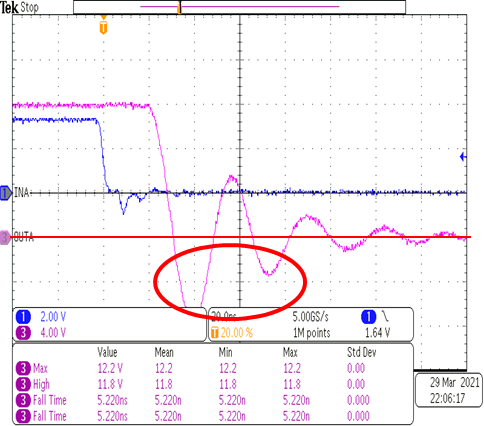Hi team,
Which current does "500-mA reverse current without either damage", which is written in its datasheet "8.3.4 Output Stage", mention and why should this limitation be considered?
UCC27524A1-Q1 could sink and source 5A but this datasheet mentions 500-mA reverse current limitation and I cannot understand which reverse current I should take care and why damage could happen be this event. Is it related to latch up tolerance or something different? Explanation for "which current reverse current mentions" with "Figure 20. UCC27524A1-Q1 Gate Driver Output Structure" could be helpful for my understanding.
If this "reverse current" mentions external MOSFET driven by UCC27524A1-Q1, then negative pulse occur and maybe lead latch-up. In this case, is this reverse current limitation depending on "external MOSFET body diode characteristics" or "how much negative pulse happen on external MOSFET drain-source involved with UCC27524A1-Q1 OUTx to GND negative voltage"?
Regards,
Ochi



